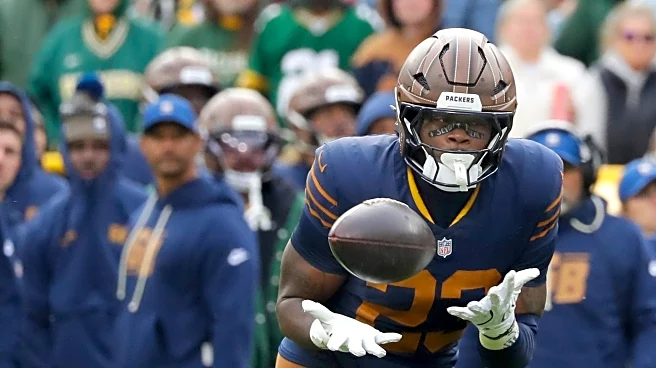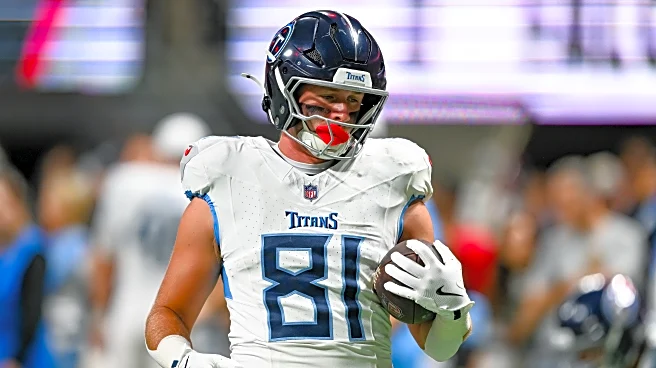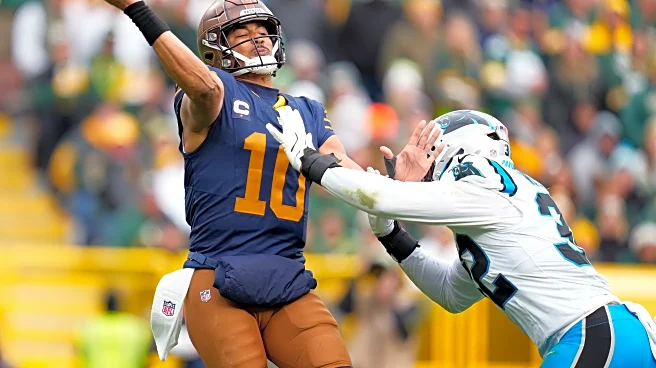I am especially sick of bubble screens, but regular screens aren’t always the best, either! Such was the case early in the fourth quarter on Sunday when the Green Bay Packers faced third and three from
the Carolina Panthers’ eight-yard line, threatening to score and tie the game at 13.
The Packers love screens of all kinds, but they’re not great at them, and when they do work, they tend to involve tight end Tucker Kraft, who was out of the game at this point. It also helps if the opposing defense is poor at tackling, or poor at defending pass-catching running backs, and that’s not the case with the Panthers. Carolina has a lot of flaws, but they entered the game third in defending pass-catching backs and actually got slightly worse (they are now fourth) due to Chris Brooks’ efforts in this game.
Josh Jacobs and Emanuel Wilson combined for five receptions on seven targets, for a total of 14 yards. It is worth noting that on the Packers’ very first offensive play of the game, Josh Jacobs gained seven of those 14 receiving yards, and so after that play the duo gained seven yards on six targets. Furthermore, the play in question, while looking very much like a screen pass, was technically a run, as Love threw the ball backwards to Wilson, and so does not count in the stats above. The play lost five yards and so you can mentally knock five yards off of that running back reception total.
And so the screen was already a questionable call from a personnel standpoint (no Kraft, by the way, the Panthers entered the game ranked dead last in defending tight ends), and a matchup perspective (Carolina is good at stopping this specific thing), but it was also bad from a pure strategic perspective.
Ideally, on third and three from the eight-yard line, you would like a play that, at worst, gives you a good chance of getting the three yards, and preferably with a throw to the end zone as an option too. The problem with a screen here is that you’re putting the ball in the hands of your receiver five yards behind the line of scrimmage, with no forward momentum, and relying on him to get at least eight yards. That means no missed blocks, no drops, etc., and that’s a lot of moving parts for a measly three yards. A basic running play is often able to generate three yards, even if a few players miss their assignments, and even if the back doesn’t gain three yards, they are likely to make a fourth-down attempt easier, and unlikely to lose major yardage. Josh Jacobs gained three yards or scored a touchdown on 12 of his 17 rushing attempts in this game. You might gain a ton of yards on a screen, but there’s a higher-than-normal chance that things get blown up.
It’s also worth noting that, while a screen may seem like a somewhat safe play when you’re missing a bunch of players as the Packers were, screens are actually very complicated and very difficult to execute. I personally would argue that inexperienced receivers would be better served by running routes than having to block in space. Christian Watson was out of the game as well at this point, and Watson is the best blocking receiver on the team. If he’s not catching the screen, it’s nice to have him out front, and if he’s not out in front, running this play is risky!
The trio blocking on here were Malik Heath, Savion Williams, and John FitzPatrick, and on this play, the pass takes Williams a little further outside than Love wanted, and Malik Heath blows his block completely, allowing Tre’von Moehrig to make the tackle immediately.
But even if Heath had held up, Wilson had a long way to go, and several additional tacklers to avoid, even from the back side, which leads us to the final terrible thing about this play.
This play involves pre-snap motion, with Wilson floating out behind the trio of bunched receivers.

If this were done for purposes of deception, to free up Romeo Doubs at the top of the formation, it wouldn’t be a terrible idea. Instead, the motion has the effect of drawing the entire defense to the screen. It’s the obvious target for the defense, and they swarm, and because the Packers are so close to the end zone with a shortened field, they don’t have far to swarm.
The Packer offense is bizarre this year, because in a vacuum, on a per-down basis, their offense is amazing, supporting Matt LaFleur’s reputation as an elite play designer. But situationally, the Packers do so much damaging, self-defeating play calling that it almost doesn’t matter. You can be fantastic on two-thirds of your plays, but if you blow up on third and fourth down, or in other high-leverage situations, all of the other good plays you ran don’t matter.
This was a dumb call, as was the play Savion Williams fumbled on in the first quarter at the Carolina 16-yard line.












